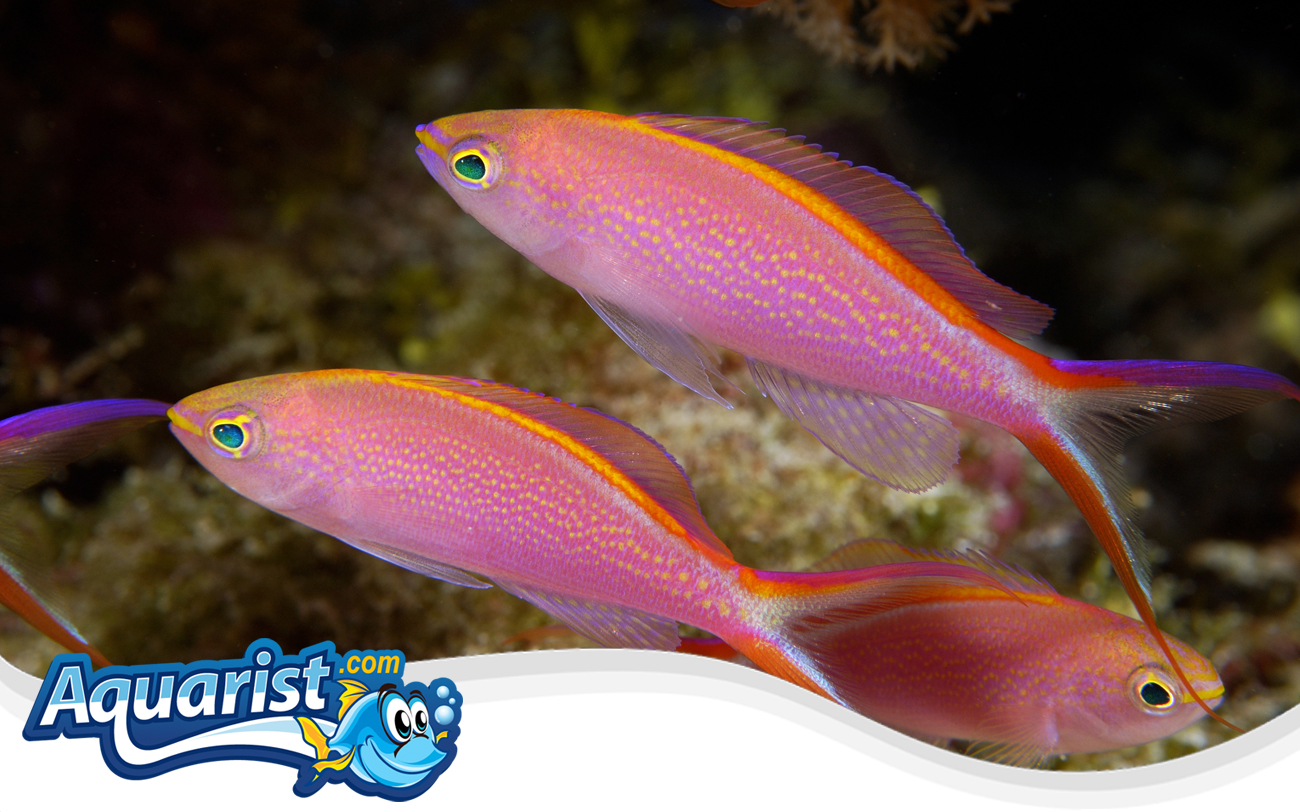Overview
- Native to the Indo-Pacific region, typically found in outer reef slopes and drop-offs.
- Distinguished by its vivid pink and purple hues with subtle yellow highlights, especially in males.
- A peaceful, schooling species often seen swimming in the water column above coral formations.
- Best suited for intermediate to advanced aquarists due to its dietary and environmental needs.
Feeding
- Planktivorous; primarily feeds on zooplankton and other small marine organisms.
- In captivity, thrives on a varied diet of mysis shrimp, brine shrimp, finely chopped seafood, and specialized planktonic foods.
- Feed small amounts multiple times daily to replicate natural feeding behavior.
- Consistent, high-quality feeding is essential for health and vibrant coloration.
Habitat
- Requires a mature, well-established aquarium (minimum 70 gallons) with excellent water quality and circulation.
- Open swimming space is important, along with structured live rock for refuge.
- Prefers subdued lighting and low-stress environments to thrive.
- Hiding places help reduce stress and support natural schooling behavior.
Fish Care
- Optimal water temperature: 72-78°F (22-26°C).
- pH level: 8.1-8.4, with a specific gravity of 1.020-1.025.
- Requires stable water parameters; fluctuations can lead to stress or health issues.
- High water quality maintained through regular testing and water changes is vital.
Compatibility
- Peaceful and best kept in small groups with one male and multiple females.
- Compatible with other peaceful reef-safe species; avoid aggressive tank mates.
- Well-suited for reef aquariums, safe with corals and most invertebrates.
- May be shy around overly active or aggressive species, especially in smaller tanks.
Aquarium Behavior
- Schooling fish that prefers to swim in mid-water, especially in groups.
- Can be shy at first, but will become more confident in a stable, well-maintained environment.
- Thrives with plenty of space to swim and shelter to retreat to when needed.
- Displays bright coloration and natural behavior under ideal conditions.


